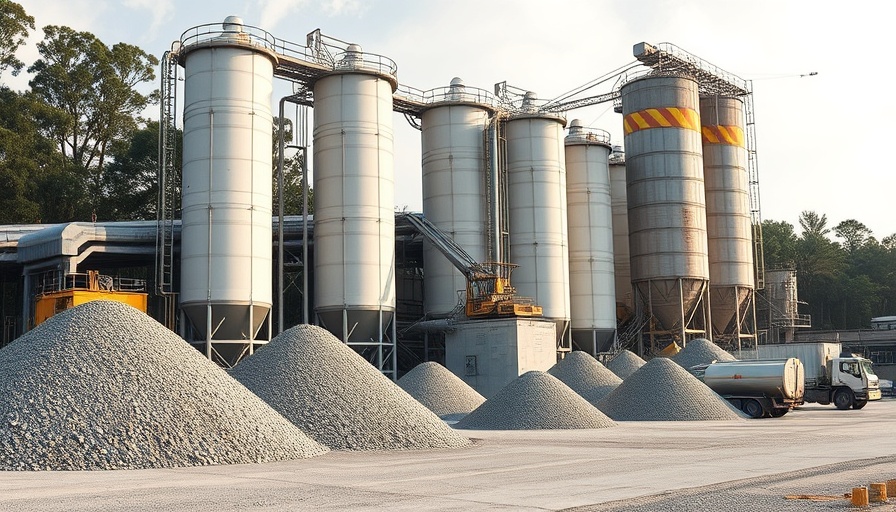
The Hidden Environmental Costs of Concrete Manufacturing
Concrete plays an undeniable role in modern construction, with a staggering production of 4.4 billion tons worldwide every year. However, beneath its robust facade lies a significant environmental impact, contributing between 4% to 8% of the global carbon emissions. Understanding how concrete contributes to this climate challenge is crucial for anyone involved in the sector.
The Cement Connection to Carbon Emissions
The process of producing cement is predominantly responsible for these emissions. For every ton of cement made, approximately 900 kg of carbon dioxide is emitted, primarily through the clinker manufacturing process. This involves heating raw materials like limestone at extremely high temperatures, releasing considerable amounts of carbon dioxide into the atmosphere during production.
Reducing Carbon Footprint through Admixtures
Fortunately, there is growing awareness about solutions to mitigate the environmental impact of concrete, especially through the use of admixtures. These chemical additives enhance concrete's properties and can significantly lower its carbon footprint. One of the major advantages of using admixtures is their ability to reduce the overall need for cement, leading to a decrease in emissions associated with its production.
Key Benefits of Admixtures in Concrete
Incorporating supplementary cementitious materials like fly ash, slag, or rice husk ash can effectively reduce the amount of cement needed in the concrete mix. This not only cuts back on carbon dioxide emissions but also promotes recycling of waste materials, fostering a circular economy within the construction industry.
Improving Workability and Efficiency
Beyond reducing cement content, admixtures like superplasticizers enhance the workability of concrete. Improved workability means that concrete can be mixed and transported more efficiently, reducing the energy consumed in the mixing process. By saving energy in concrete placement, businesses can further lower their carbon emissions.
Long-Term Durability Equals Sustainability
Durability and longevity are also critical factors in sustainable concrete use. By maximizing the lifespan of concrete through the use of admixtures that combat corrosion, developers and property managers can decrease the frequency of repairs and replacements, further reducing their carbon footprint over time.
Costs vs. Benefits for Businesses
For business owners and property developers, the shift to greener construction practices may seem daunting from a cost perspective. However, the long-term financial and environmental benefits can far outweigh initial investments in eco-friendly materials and practices. As consumers worldwide increasingly favor sustainable practices, investing in lower-carbon concrete solutions can also enhance company reputations and attract environmentally conscious clients.
On the Path to Sustainable Construction
Integrating admixtures into concrete production is a significant step towards achieving sustainability in the construction industry. By making conscious choices—using admixtures to reduce carbon emissions, enhancing durability, and improving efficiency—business owners, facility managers, and property developers can contribute to a more sustainable future while still meeting their project requirements.
To stay informed about effective strategies and innovations in sustainable construction, embrace the transition towards greener practices and dedicate your resources to exploring the wide range of environmentally friendly options available.
 Add Row
Add Row  Add
Add 




Write A Comment